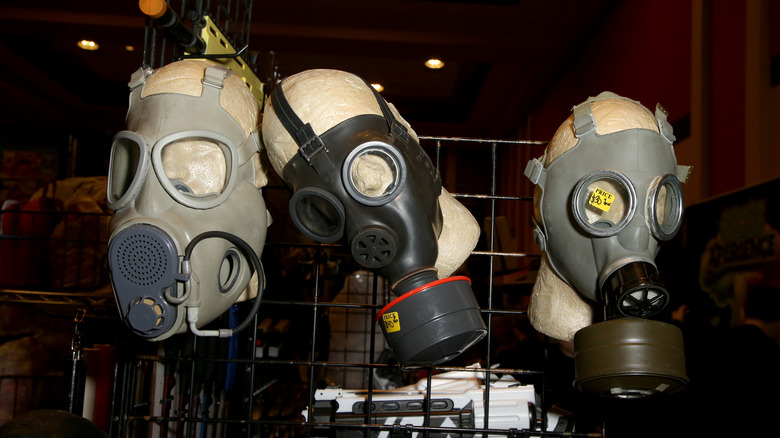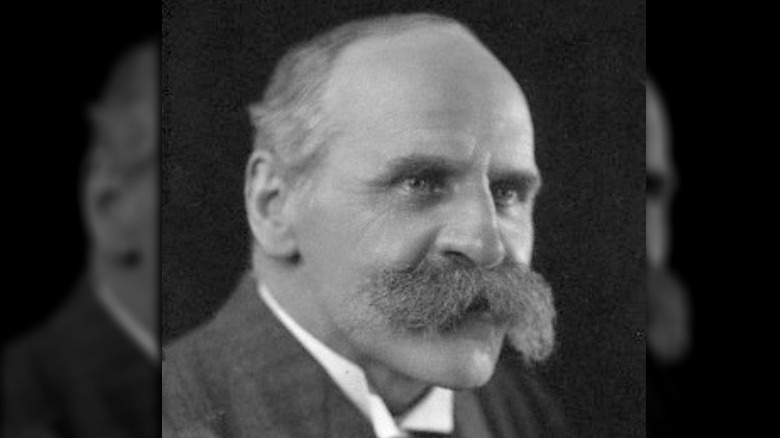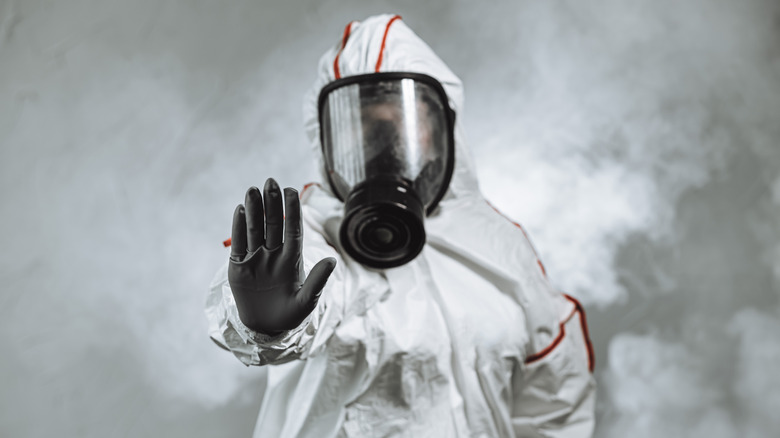Who Invented The Gas Mask?
Necessity is the mother of invention, as the old saying goes, and one of the tools used today by soldiers, firefighters, chemists, miners, and other professions was born out of a rather gruesome necessity. Specifically, the gas mask, which protects the wearer from inhaling a gas that could incapacitate or kill them, was born from the gruesome realities of World War I, when deadly chlorine gas was deployed as a weapon of mass destruction.
According to Smithsonian Magazine, prior to the invention of the gas mask, the only way for a soldier on the field to protect himself from deadly gas was to use a urine-soaked rag as a face covering, which worked reasonably well, according to the University of Kansas Medical Center. However, following the Battle of Ypres in 1915, during which an untold number of Allied troops died due to the gas, the Allies realized that they needed something less crude to mitigate the danger, and they contacted a Scottish medical researcher to come up with a plan. The Scotsman then set about developing a better solution, using his teenage daughter as a research assistant and members of his team as guinea pigs. It worked, and today we can thank the admittedly unorthodox methods of John Scott Haldane for the invention of the gas mask.
John Scott Haldane wasn't your everyday scientist
John Scott Haldane was no ordinary scientist. While other researchers of his day used lab animals for their anatomical experiments, the Scot was having none of that. As The Tennessean reported, Haldane would lock himself in a sealed chamber and expose himself to potentially lethal gases, and then document the effects on his mind and body.
By the time World War I and the Battle of Ypres rolled around, according to Smithsonian Magazine, he was a respected leader in the field when it came to respiration and poisonous gas and the like. He was dispatched to the battlefield to try to determine what kind of gas had been used on Allied troops, and more importantly, what could be done about it. Observing the discoloration on the metal buttons on the soldiers' uniforms, Haldane determined that the men had been killed by chlorine gas. That was only Phase 1 of solving the problem. Phase 2 involved figuring out what to do about it.
When all else fails, use your teenage daughter as a lab assistant
What happened next reads like an instruction manual in How Not To Science. As Smithsonian Magazine explains, Haldane would expose himself and his test subjects to the gas, while his teenage daughter, Naomi, would run interference. Stationed at the door, Naomi would immediately pull any sickened individuals to safety and, if necessary, perform artificial respiration on them.
His first creation was known as the Black Veil Respirator, and to call it crude would be an understatement. Effectively, the soldier wearing cotton pads soaked in sodium thiosulphate, which would neutralize small concentrations of chlorine. It didn't work. "I found using it in the gas cloud that after a couple of minutes one couldn't breathe and so it was pushed up over the forehead and we swallowed the gas," said a soldier.
Building on Haldane's work, another scientist, with Haldane's help, invented the Box Respirator, the precursor to the modern-day gas mask. That man was Edward Harrison who, like Haldane, didn't think twice about experimenting on himself. Unfortunately for Harrison, he exposed himself to too much gas and died in the name of science.


